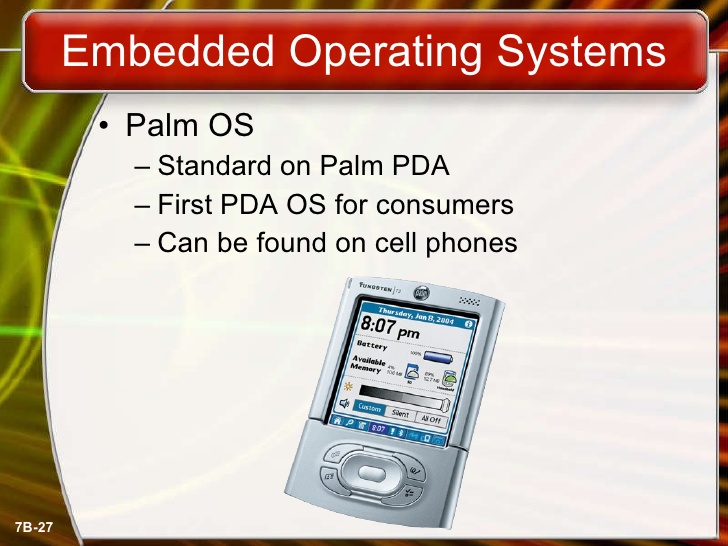Palm OS 1.0 is the original version present on Pilots 1000 and 5000. Versions and all previous versions of Palm OS 5 are based on the 68000 AMX kernel [11] licensed from KADAK Products Ltd. Although this kernel is technically capable of multitasking, the “license terms and conditions which specifically states that maybe the Palm Protect API is for creating / manipulating tasks in the OS “. Palm OS does not distinguish between RAM and file storage systems. The application is installed directly into RAM and executed on the spot. Because there is no dedicated file system supported, the operating system depends on a constant RAM refresh cycle to store memory. The OS supports 160 × 160 displaying monochrome output. User input is generated through Graffiti or optional handwriting recognition systems via a virtual keyboard. This system supports synchronizing data to other PCs through HotSync technology by itself several serial interfaces. The latest bugfix release is version 1.0.7. Version 1.0 features the classic PIM Address application, Date Book, Memo Pad, and To Do List. Also includes a calculator and security tool to hide notes for personal use.
Palm OS 2.0 was introduced on March 10, 1997 with PalmPilot Personal and Professional [13]. This version adds TCP / IP networks, HotSync networks, and backlight display support. The last bugfix release is version 2.0.5. A couple of new applications, Mail and Load are added, and the PIM application standard has been improved. Palm OS 3.0, this version adds IrDA infrared and improved font support. This version also has a PIM application update feature and an update for the application launcher. Now, application code and data must be loaded into the device’s RAM, similar to the behaviour of a desktop operating system. A Universal Connector support with new USB is introduced. Optionally before Mobile Internet Kit is now part of the operating system. This version also has increased security and UI.
Palm OS 5 (not called 5.0) was inaugurated by the PalmSource Sawit subsidiary in June 2002 and was first implemented on the Tungsten Palm T. This is the first version released to support ARM devices, with support for the Dragonball application through the Palm Environment Compatibility Application (PACE) emulator. Even with the addition of PACE overhead, Palm applications usually run faster on ARM devices than previous generation hardware. New software can take advantage of ARM processors with small ARM code units, referred to as ARMlets.
With a stronger hardware base, Palm OS has been substantially enhanced for multimedia capabilities. High density 320 × 320 screens are supported together with full digital sound playback and API recording. A separate Palm Bluetooth stack is added together with the IEEE 802.11b Wi-Fi stack. Secure network connection via SSL is supported. The OS can be customized with a different color scheme. Palm OS 5 PalmSource was developed and licensed a web browser called PalmSource Web Browser, [20] which is based on the NetFront 3.0 ACCESS browser ‘. Palm OS Cobalt (6.0) is the successor intended for Palm OS 5. This was introduced on February 10, 2004, but was no longer offered from ACCESS (see the next section).
